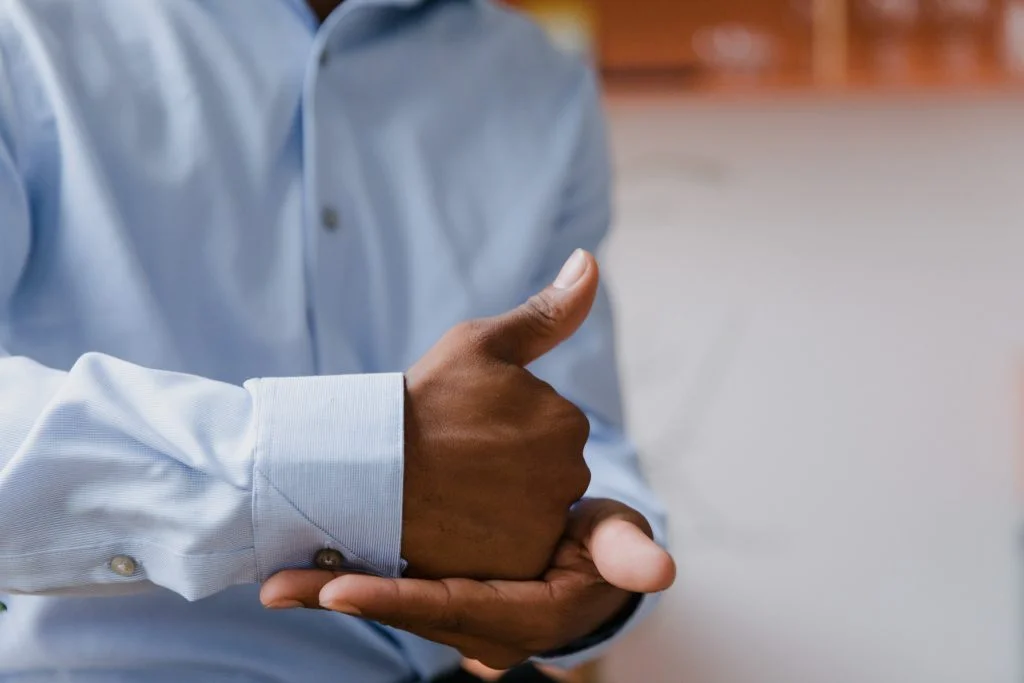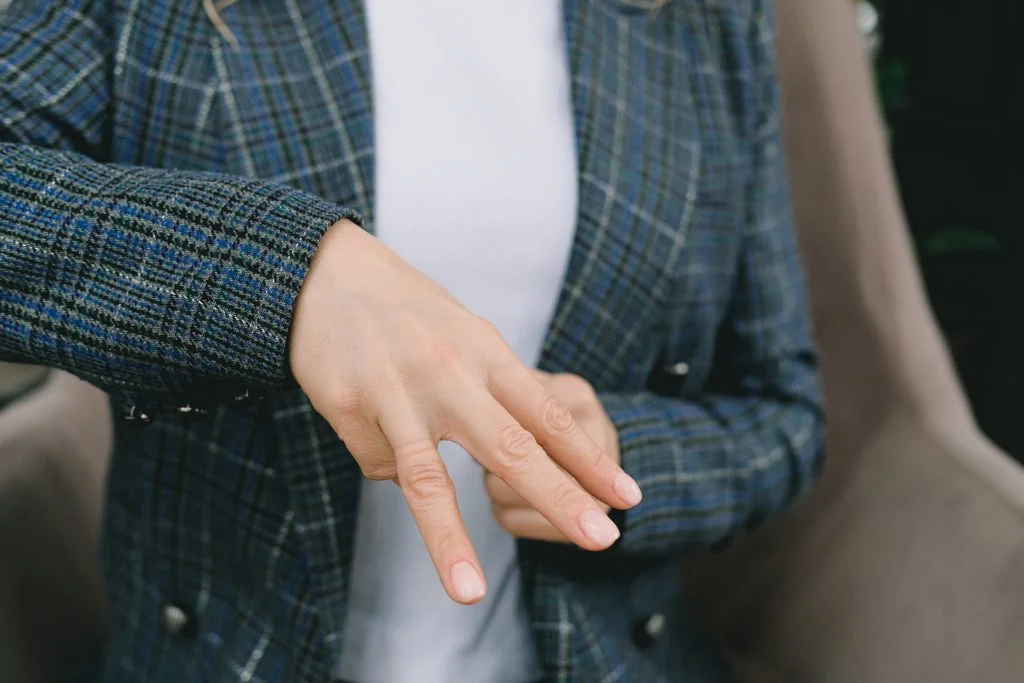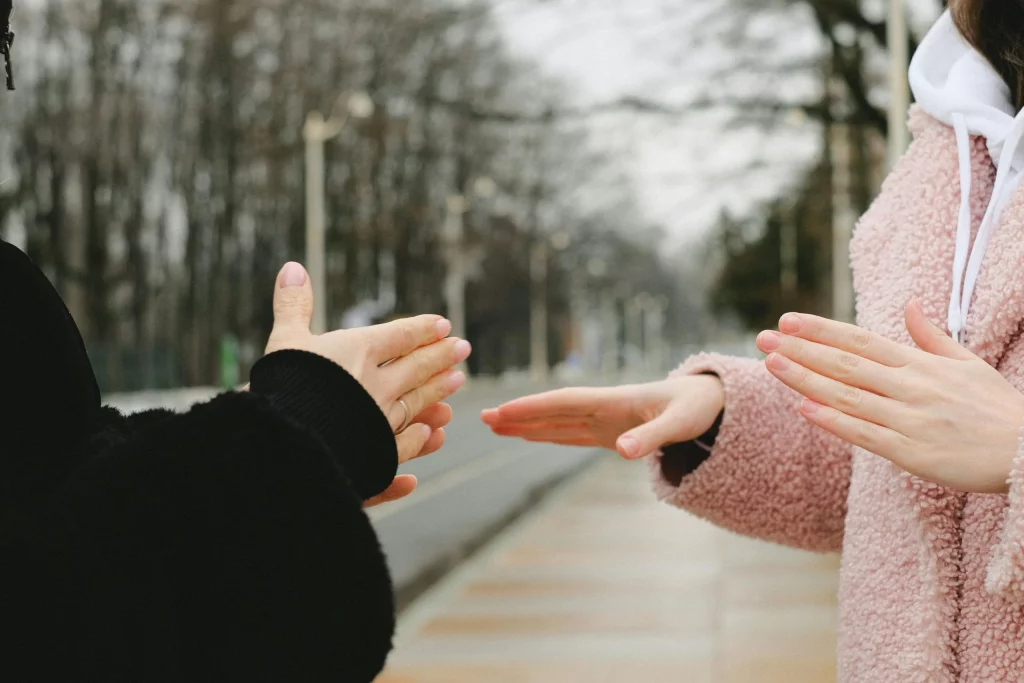I’ll never forget the first time I signed ‘I love you‘ to my deaf friend in elementary school. That moment ignited my lifelong passion for deaf culture. How much do you know about this vibrant community? Through this article, I invite you on a personal journey, where each fact is a step deeper into understanding and appreciation.
From myths to realities, this article is not just a list of facts, but a bridge to a world rich in expression and resilience. Let’s embark on this enlightening path together.
I was born deaf, but I was also born with a strong sense of self.
Shoshannah Stern
Deaf Culture Facts
Welcome to our journey through deaf culture and history, a realm filled with unique perspectives and stories. Keep in mind that a quiz awaits at the end of this page – your chance to shine with what you’ve learned!
- Deaf culture emphasizes the visual and tactile ways of experiencing the world.
- Many Deaf people consider themselves part of a cultural and linguistic minority, not disabled.
- The use of the capital “D” in Deaf signifies cultural identity.
- American Sign Language (ASL) is a complete, natural language with its own grammar and syntax.
- Deaf culture is rich in traditions, arts, and organizations.
- Deaf individuals often gather at Deaf clubs or events, forming a strong community bond.
- Eye contact is crucial in Deaf communication and is considered respectful.
- Facial expressions and body language play a significant role in ASL.
- Storytelling and poetry in sign language are important cultural art forms.
- Deaf schools often serve as cultural and educational hubs in the Deaf community.
- Deaf individuals may prefer the term “Deaf” over “hearing impaired”.
- There are distinct Deaf cultures and sign languages around the world.
- ASL is not universal; each country typically has its own sign language.

- The Deaf President Now movement in 1988 was a landmark event for Deaf rights.
- Cochlear implants are a controversial topic within the Deaf community.
- Many Deaf people value their Deaf identity and see no need to “fix” their hearing.
- Deaf culture includes specific norms for interrupting conversations, leaving gatherings, and getting attention.
- Deaf individuals often have keen visual awareness and peripheral vision.
- The term “Deafhood” describes the process of understanding and embracing one’s Deaf identity.
- Technology like video relay services and text messaging has significantly impacted Deaf communication.
- There is a movement to officially recognize ASL as a language in more countries.
- Deaf arts include visual arts, theatre, dance, and more, often reflecting Deaf experiences.
- ASL poetry often plays with the shape, movement, and expression of signs.
- Deaf clubs and Deaf cafés provide social and cultural gathering spots.
- Deaf athletes compete in events like the Deaflympics, with sports adapted for visual cues.
- Deaf education methods include bilingual-bicultural, Total Communication, and Oralism.
- Cued Speech is a visual system that complements oral language development for the deaf.
- Many Deaf individuals are bilingual, using both a sign language and a written/spoken language.

- There is a diversity of views on speech therapy and oral education within the Deaf community.
- Deaf culture values the preservation and teaching of Deaf history and sign languages.
- The role of interpreters is crucial in Deaf individuals’ access to public life.
- Deaf literature reflects experiences of Deafness and sign language use.
- Martha’s Vineyard was known for its high population of Deaf individuals and a unique sign language in the 18th and 19th centuries.
- Deaf individuals may experience “Deaf Gain”, valuing the contributions of Deafness to society.
- There’s an emphasis on visual learning and teaching in Deaf education.
- Deaf culture advocates for Deaf children’s rights to access sign language and Deaf culture.
- The concept of Audism describes discrimination based on the ability to hear or behave in the manner of those who hear.
- Deaf humor often revolves around experiences unique to the Deaf and sign language misunderstandings.
- There are Deaf film festivals showcasing works about Deaf culture and by Deaf filmmakers.

- Certified Deaf Interpreters (CDIs) are Deaf individuals trained in interpretation.
- Some Deaf individuals use assistive devices like vibrating alarms and light-up signalers.
- DeafBlind culture intersects with Deaf culture, with unique communication methods like tactile ASL.
- Historically, Deaf individuals have faced employment discrimination and limited job opportunities.
- Deaf communities have their own folklore and legends, often passed down through generations.
- There’s a growing recognition of the need for Deaf accessibility in public services.
- DeafSpace involves architectural and environmental design tailored to the sensory experience of Deaf individuals.
- “Big D” Deaf refers to someone who is culturally Deaf, while “small d” deaf refers to the audiological condition.
- Deaf culture encourages empowerment and self-advocacy in the face of challenges.
- Some Deaf individuals experience additional disabilities, requiring more tailored approaches in education and communication.
- Deaf clubs historically served as crucial social outlets and information centers.
Deaf Culture Myths

Now that we’ve explored the essential facts about the deaf culture, let’s unravel the myths and discover the truths that lie beneath.
- Deaf People Can’t Enjoy Music
Many deaf individuals enjoy music through the vibrations it produces. They can feel the rhythm and beat through tactile sensations, allowing them to experience music in a different yet meaningful way. - All Deaf People Use Sign Language
Not all deaf people use sign language. Communication methods vary greatly among deaf individuals, including lip reading, written communication, and using assistive listening devices, depending on their preferences and upbringing. - Deaf People Have Limited Career Options
Deaf individuals can pursue a wide range of careers. Advances in technology and greater awareness of inclusivity have opened up many fields. Their career choices are as diverse as those of hearing individuals. - Deafness is Always Hereditary
While some types of deafness have genetic links, many cases are due to other factors like illness, injury, or environmental exposure. Each individual’s situation is unique, and not all deaf people have a family history of deafness. - Deaf People are Isolated from the Hearing World
Many deaf individuals actively participate in both deaf and hearing communities. They often bridge the gap between the two worlds, fostering understanding and inclusivity through various forms of communication and cultural exchange.
No products found.
Deaf Culture Quotes

It was a blast researching quotes about deaf culture, as I found many things I had never heard of. Here is my list of my five favorite ones:
Deaf people can do anything except hear.
I. King Jordan
This quote by I. King Jordan, the first deaf president of Gallaudet University, emphasizes the capabilities and potential of deaf individuals, highlighting that their inability to hear is the only limitation they have.
Silence is the last thing the world will ever hear from me.
Marlee Matlin
Marlee Matlin, an Academy Award-winning deaf actress, expresses her determination to be heard and make an impact, despite her deafness.
I see deafness as an advantage in many ways, and I see it as a disadvantage in other ways. So I avoid putting a blanket on deafness as just one thing.
Nyle DiMarco
Nyle DiMarco, a deaf model and activist, offers a nuanced view of deafness, recognizing it as both an advantage and a disadvantage, refusing to oversimplify the experience.
The deaf community is viewed by the hearing world as having a lack, but it is exactly this lack which can become a strength.
Oliver Sacks
Neurologist and author Oliver Sacks discusses how the perceived ‘lack’ in the deaf community is actually a source of strength, providing a unique perspective.
Being deaf is not about listening with your ears but understanding with your heart.
Heather Whitestone
Heather Whitestone, the first deaf Miss America, emphasizes the emotional and empathetic aspects of communication, beyond just auditory understanding.
Deaf Culture FAQ

After these beautiful quotes, it’s time to check out the most frequently asked questions about deaf culture. This is the final part of the article before the quiz, so read carefully.
- What is Deaf Culture?
Deaf culture encompasses the social beliefs, traditions, history, and values of the Deaf community, centered around sign language and a shared identity. It goes beyond just a lack of hearing, focusing on visual communication and community bonds. - Why is Deaf Culture Important?
Deaf culture is vital as it gives a sense of community to deaf or hard of hearing individuals. It celebrates Deaf experiences, enriches human cultural diversity, and helps in bridging the gap between Deaf and hearing communities. - How is Language Integral to Deaf Culture?
Language, especially sign language, is central to Deaf culture. It’s a complete, natural language crucial for expression and identity within the Deaf community. - What are Some Common Misconceptions About Deaf Culture?
Misconceptions include viewing Deaf people as lacking, thinking sign language is universal, and assuming all Deaf individuals have no hearing. Deaf culture is diverse and values its unique linguistic and cultural identity. - How Can Hearing People Respect and Support Deaf Culture?
Hearing people can support Deaf culture by learning about it, understanding sign language’s significance, promoting accessible communication, and listening to Deaf voices in discussions about their rights and experiences.
No products found.
Deaf Culture Quiz

Test your knowledge with the Deaf Culture Quiz! Fail to answer correctly, and you’ll find yourself playing charades with a very confused mime!
Conclusion
The deaf community’s vibrant culture, profound sense of solidarity, and commitment to accessibility are not just inspiring but also instructive. It beckons us to listen, not with our ears but with our hearts and minds.
As we reflect on what we’ve learned, let’s ponder this: How can we, as a society, better embrace and celebrate the diversity and strength of the deaf community?
4 Sources Used For This ArticleDeaf Culture And Terminology – Life Print
Understanding Terminology in Deaf Culture – Deaf Service Unlimited
Hearing children of Deaf parents – Ncbi


